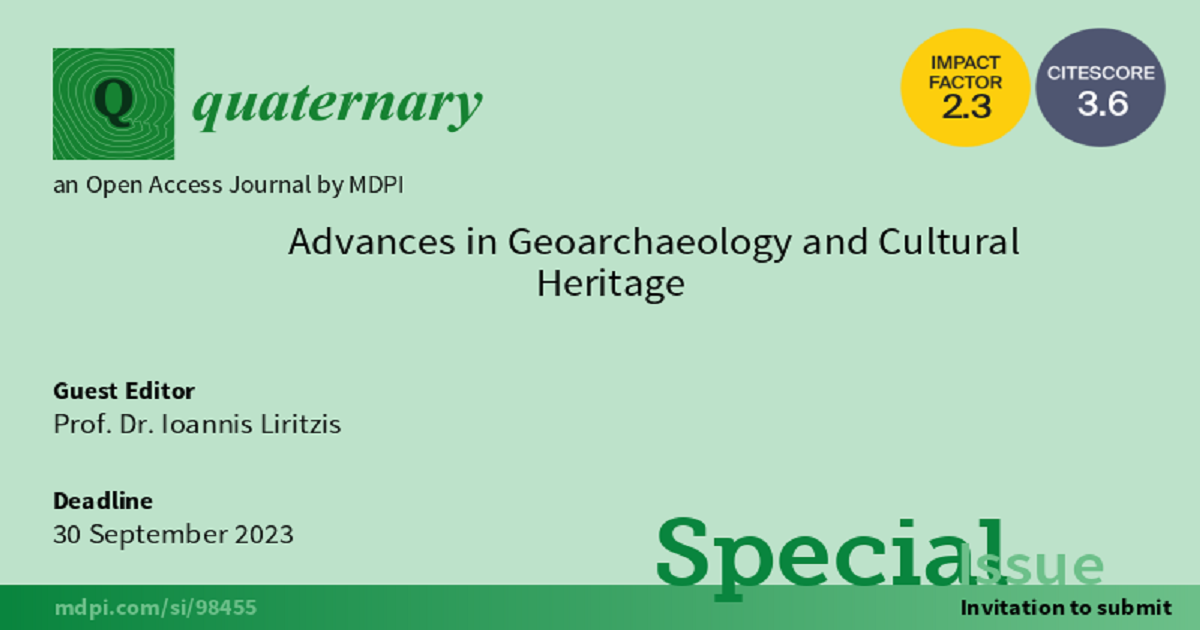Advances in Geoarchaeology and Cultural Heritage
A special issue of Quaternary (ISSN 2571-550X).
Deadline for manuscript submissions: closed (30 September 2023) | Viewed by 29535

Special Issue Editor
Interests: preservation/conservation of monuments and artifacts; museology
Special Issues, Collections and Topics in MDPI journals
Special Issue Information
Dear Colleagues,
The present Special Issue (SI) entitled Essays in Geoarchaeology and Cultural Heritage encompasses a broad field concerning the interaction of human development over millennia with environmental factors. The non-linear trend of evolution of ancient cultures is decisively affected by climatic change, landscape changes and more. At the same time, natural sciences which are applied to material culture, and simultaneously, delving into the stratigraphic record, reveal and document past daily life. The task of modern humanity is to preserve the memories of the past. This Special Issue is based on selected papers presented in the digital 2nd Sino-Hellenic International Conference on Global Issues of Environment and Culture which took place on 17–19 Sept. 2021, hosted in Greece.
Beyond the selected papers, the SI will touch on other issues chronologically, covering Quaternary, e.g., palaeoanthropology and environment, climate change and ancient cultures, disaster archaeology, geoarchaeological issues, archaeometry—archaeological sciences, digital and remote sensing applications and archaeological GeoParks, to mention a few.
Prof. Dr. Ioannis Liritzis
Guest Editor
Manuscript Submission Information
Manuscripts should be submitted online at www.mdpi.com by registering and logging in to this website. Once you are registered, click here to go to the submission form. Manuscripts can be submitted until the deadline. All submissions that pass pre-check are peer-reviewed. Accepted papers will be published continuously in the journal (as soon as accepted) and will be listed together on the special issue website. Research articles, review articles as well as short communications are invited. For planned papers, a title and short abstract (about 100 words) can be sent to the Editorial Office for announcement on this website.
Submitted manuscripts should not have been published previously, nor be under consideration for publication elsewhere (except conference proceedings papers). All manuscripts are thoroughly refereed through a single-blind peer-review process. A guide for authors and other relevant information for submission of manuscripts is available on the Instructions for Authors page. Quaternary is an international peer-reviewed open access quarterly journal published by MDPI.
Please visit the Instructions for Authors page before submitting a manuscript. The Article Processing Charge (APC) for publication in this open access journal is 1600 CHF (Swiss Francs). Submitted papers should be well formatted and use good English. Authors may use MDPI's English editing service prior to publication or during author revisions.
Keywords
- Geoarchaeology
- Cultural evolution
- Sea level changes
- Obsidian acquisition
- Rock art
- Climatic change
- Digital cultural heritage and deforestation
- Ancient civilization transformations
- Palaeogeography
- Paleoenvironment





